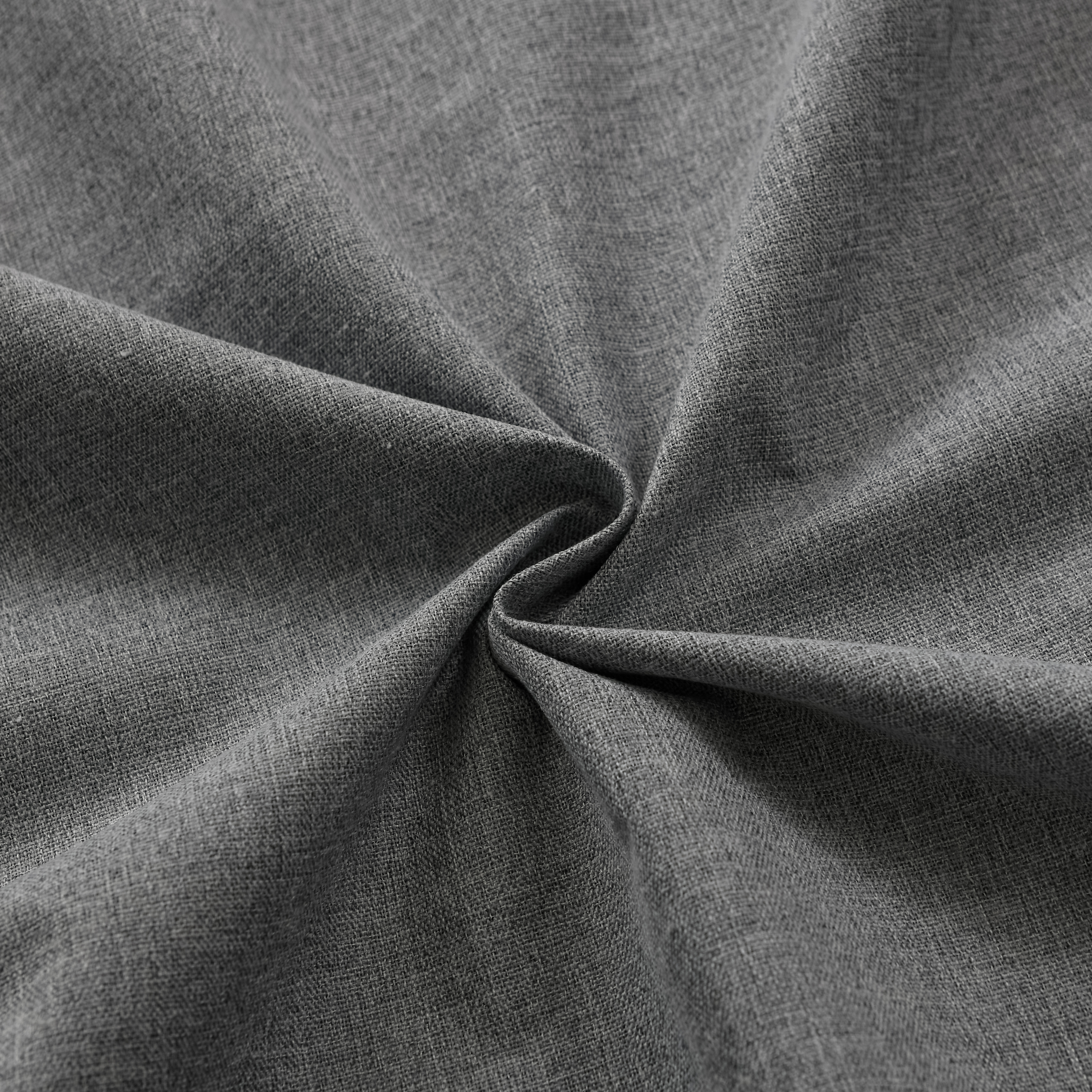Industry knowledge
What are the key characteristics and properties of linen fabric?
Linen curtain fabric is known for its unique set of characteristics and properties, which contribute to its popularity and versatility. Some key characteristics and properties of linen fabric include:
Natural Fiber: Linen is a natural fiber made from the flax plant, Linum usitatissimum. It is one of the oldest textiles in the world.
Breathability: Linen is highly breathable, allowing air to flow through the fabric easily. This makes it a popular choice for warm-weather clothing, as it helps keep the body cool and comfortable.
Moisture Absorption: Linen can absorb a significant amount of moisture without feeling damp, which contributes to its comfort in hot and humid conditions.
Quick Drying: Linen dries quickly, making it an excellent choice for clothing and textiles that may get wet or need to be laundered frequently.
Natural Luster: Linen has a subtle natural sheen or luster that gives it an attractive appearance.
Strength and Durability: Linen is a strong natural fiber that becomes even stronger when wet, making it durable and long-lasting.
Texture: Linen fabric has a distinctive texture with a slightly coarse, tactile feel. This texture adds character and charm to the fabric.
Wrinkle-Prone: Linen is known for its tendency to wrinkle easily. While some people appreciate the casual, relaxed look of wrinkled linen, others may find this a drawback.
Thermoregulation: Linen has natural thermoregulatory properties, helping to keep the body cool in hot weather and providing some insulation in cooler temperatures.
Hypoallergenic: Linen is hypoallergenic, meaning it is less likely to cause allergies or skin irritation in comparison to some other fabrics.
Antibacterial: Linen has natural antibacterial properties that inhibit the growth of bacteria, making it a good choice for personal items like towels and bed linens.
Biodegradable: Linen is environmentally friendly as it is biodegradable and can break down naturally at the end of its life cycle.
Versatility: Linen can be used in a wide range of applications, from clothing (dresses, shirts, trousers) to home textiles (bed linens, tablecloths, curtains).
Classic and Timeless: Linen has a classic, timeless appeal that never goes out of style, making it a popular choice for both contemporary and traditional designs.
Dyeability: Linen can be easily dyed in various colors, and it holds color well, resulting in vibrant and long-lasting hues.
Absence of Static and Pilling: Linen does not generate static electricity, and it is resistant to pilling (the formation of small, fuzzy balls on the fabric's surface).
How is linen fabric made?
Cultivation and Harvesting:
Linen production begins with the cultivation of flax plants, typically in cool, temperate climates. Flax plants are grown and left to mature until the stems turn yellow and the seeds inside the bolls become ripe.
Retting:
After harvesting, the flax stalks go through a process called "retting." Retting is the natural decomposition of the plant's pectin (a binding substance) by exposure to moisture and microbial action. This process can be accomplished through dew retting (left in the fields), water retting (submerging the plants in water), or chemical retting (using chemicals to break down the pectin).
Scutching:
Once the flax stalks have retted, they are then dried and mechanically beaten to remove the outer woody layer. This process is called scutching and results in the separation of the outer bark (straw) from the inner flax fibers.
Hackling or Combing:
The remaining flax fibers are then combed or hackled to further separate and align the long, fine fibers from the shorter ones. This process produces long, soft flax fibers suitable for spinning.
Spinning:
The prepared flax fibers are then spun into linen yarn or thread. Traditional methods involve using a spinning wheel or spindle to create linen threads.
Weaving:
Linen threads are woven on looms to create
linen curtain fabric. The type of weave used can vary, affecting the appearance and texture of the fabric. Common linen weaves include plain weave, herringbone, and damask, among others.
Finishing:
After weaving, the linen fabric may go through various finishing processes, including bleaching or dyeing to achieve the desired color or whiteness. Some linen fabrics may also be treated to enhance properties like softness or wrinkle resistance.
Cutting and Sewing:
Once the linen fabric is finished, it can be cut and sewn into various products, such as clothing, bed linens, tablecloths, or curtains.

 中文简体
中文简体








